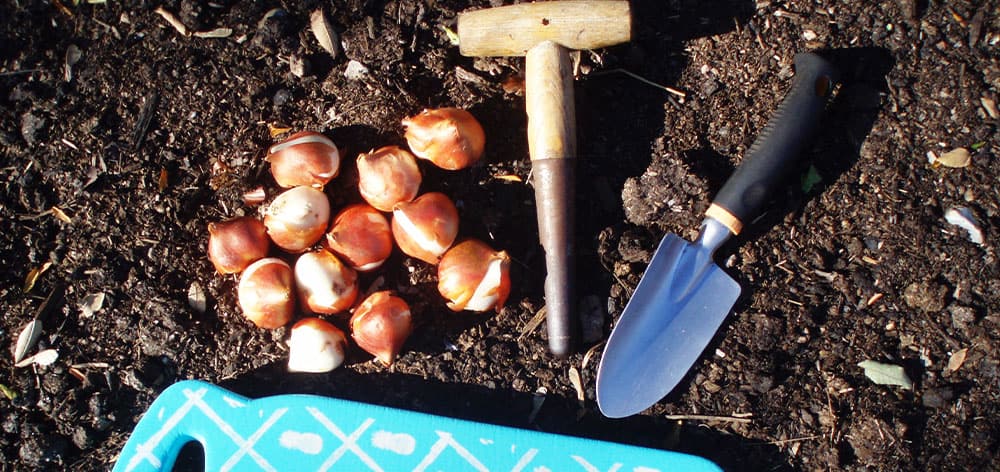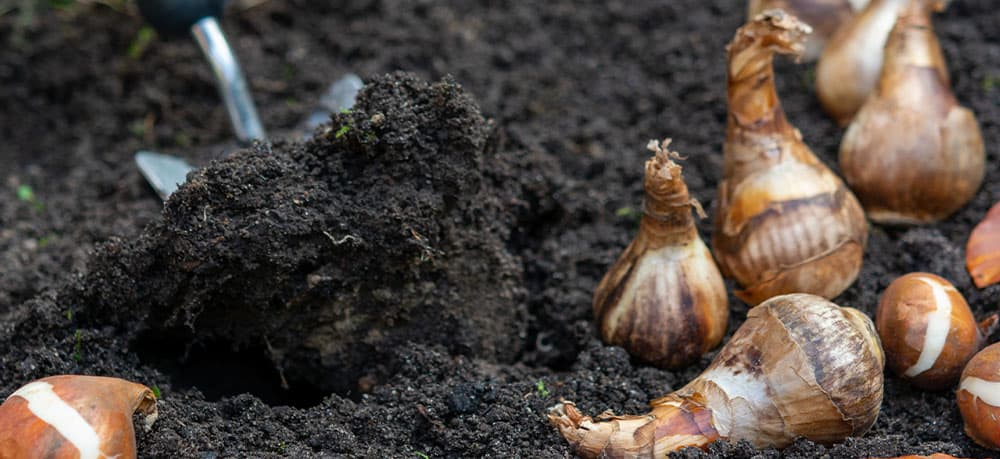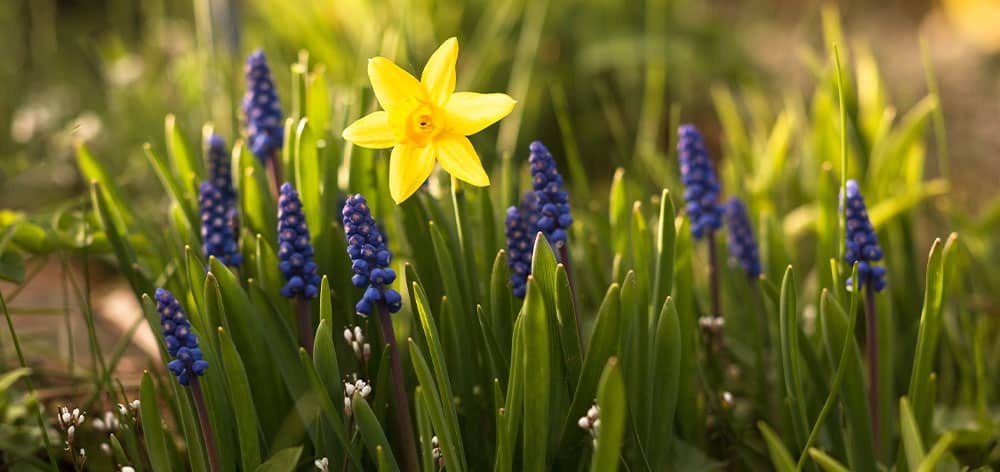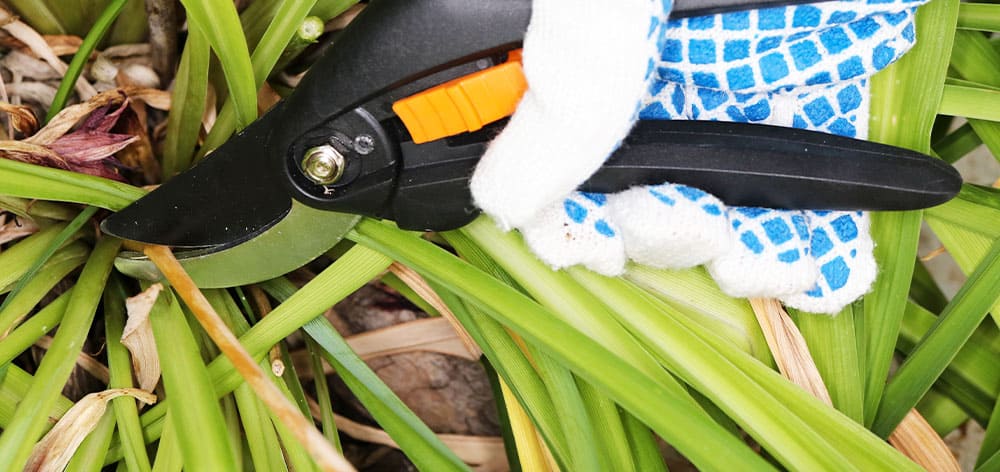Every year at the end of winter, just when we’ve almost given up on spring, the first bulbs of the year suddenly emerge with fresh flowers. They’re one of the great gifts of early spring, often appearing when everything is still brown. But they can’t surprise us with flowers in the spring unless we take the time to plant them in the fall!
 Bulbs 101: A Basic Overview
Bulbs 101: A Basic Overview
In case you’re new to bulbs or want a quick reminder—bulbs are perennial flowers with onion-shaped roots that emerge for a period of time in the spring or summer before disappearing into the ground until the following year. Crocus, tulips, snowdrops, daffodils, and hyacinths are just a few examples. Spring-flowering bulbs need to be planted in the fall, whereas summer-flowering bulbs can be planted in the spring.
When to Plant Spring-Flowering Bulbs
Just as the harvest is underway and we’re enjoying the produce of a long summer, we also need to be thinking about planting bulbs. Once the temperatures have cooled to 50-60℉, it’s high time to put bulbs in the ground. Ideally, you want them buried at least 6 six weeks before the ground freezes, so they have time to settle in and do some rooting before winter.
 How to Plant Bulbs
How to Plant Bulbs
A good rule is to plant them 2-3 times as deep as the height of the bulb. Remember to place the pointy side up, and feel free to work some compost, peat, or other organic matter into the soil to help with nutrients and drainage. Gently tamp down the soil after you cover them, water them once as a finishing touch, cover them with mulch, and say goodbye until spring.
Note: Don’t forget to mark their location in your garden journal so you don’t accidentally dig them up when you’re planting something else!
Where to Plant Bulbs
Sunlight requirements differ for the different bulbs, but generally, most need full sun or partial shade. Keep in mind that the early bloomers emerge before the trees have leafed, so you’ll have extra light in the garden. Most bulbs also need well-draining locations to keep them free of root rot.
 Tips for Arranging Bulbs in the Garden
Tips for Arranging Bulbs in the Garden
Planting bulbs where they have the proper growing conditions is only part of the equation. The other half is the fun you can have while designing beautiful displays for the springtime:
- Plant in Clusters: A single flowering bulb doesn’t have as much impact as a cluster. For best results, plant them in odd groupings of 3, 5, or 7 bulbs. Dig a single hole and plant them together with appropriate spacing.
- Plan for Successive Blooms: Not all bulbs flower at the same time. You can plan to arrange bulbs for successive blooming, with later bulbs emerging as early bulbs start to fade. That way, you can enjoy bulbs all the way through the spring.
- Layer Bulbs: With their successive bloom times in mind, you can even layer different bulbs as you plant them, kind of like a lasagna. It’s a good way to take advantage of bulbs of different heights, create beautiful combinations, and keep all the space in your garden blooming.
 How to Prune Back Existing Bulbs
How to Prune Back Existing Bulbs
Once the bulbs are done flowering, they’ll start to produce a seed head where the flower was. These should be deadheaded in order to spare the plant from putting energy towards seeds. The leaves will remain green for 6-8 weeks after flowering and should be left alone, as they are replenishing the energy stores in the bulb for the year. Once the leaves turn yellow, you can cut them back to the ground.
Spring is not the only time for planting flowers. In fact, fall is the all-important time for planting spring bulbs. Bury a few of these gems now, and you’ll enjoy a wealth of flowers next spring!
To see our selection of bulbs, feel free to visit our garden center in Moultonborough, and don’t forget to follow us on Facebook or Instagram for updates!


 How to Plant Bulbs
How to Plant Bulbs Tips for Arranging Bulbs in the Garden
Tips for Arranging Bulbs in the Garden  How to Prune Back Existing Bulbs
How to Prune Back Existing Bulbs